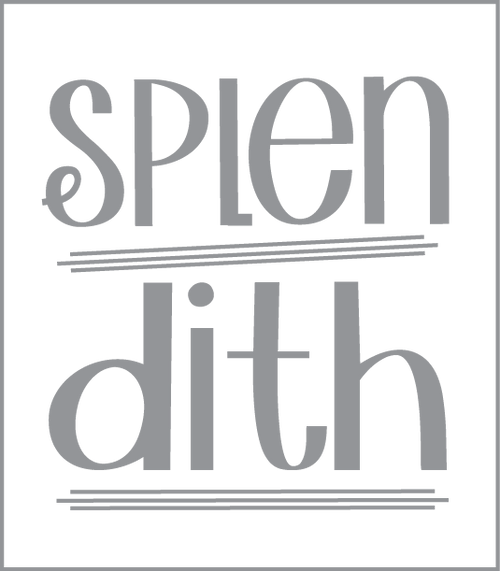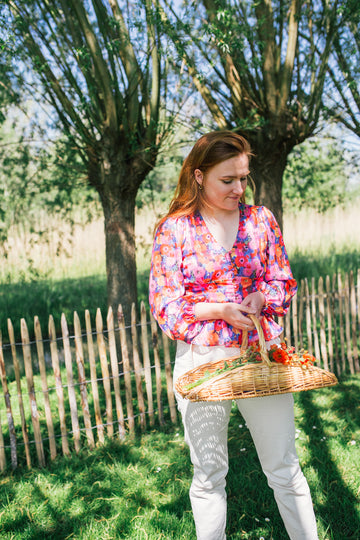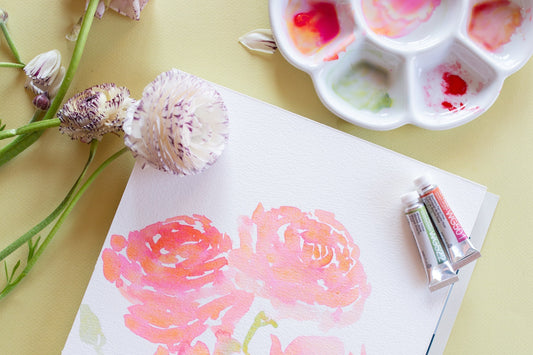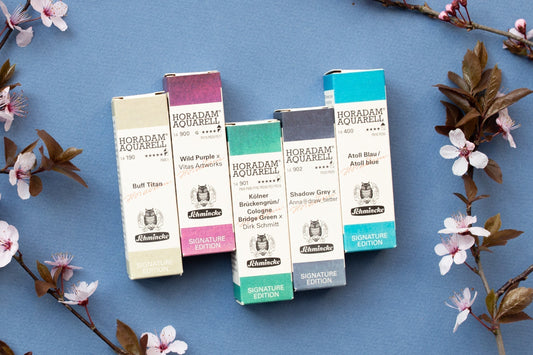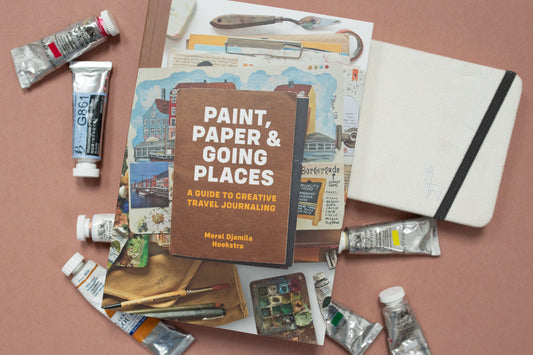
One of the basic materials for embroidery is a good needle. When you think of a needle, you immediately think of a sharp needle. While a blunt needle often works better and nicer. Surprising isn't it!? In this blog you can read all about embroidery needles and what you should pay attention to when purchasing your needles.
The size
When choosing a needle, always pay attention to the size of the needle. Not sure which one you need for your fabric? You often also have sets with different sizes, so you can always test which needle is the best for you and your fabric. Always use the narrowest needle possible. The larger your needle, the larger the 'hole' you make in the fabric. The higher the needle number, the smaller the needle is. For example, 24 is thin and 12 is quite large and thick. Sizes 20-24 are common sizes for free embroidery.
Do you use a sharp or blunt needle for embroidery?
A sharp needle can be useful for fabrics that are quite tightly woven. My first instinct was also to choose a sharp needle. That wasn't my best choice, there's a good chance you'll prick your finger. The only reason to choose a sharp needle is if you have an extremely densely woven fabric to embroider on. Otherwise, just choose a blunt needle.
It is also better for the fabric and previously made stitches to use a blunt needle. Blunt needles push the threads of the fabric apart and don't cut them like a sharp needle does.
Different types of needles
You might think how many different needles there are, haha you'll be surprised ;). Do you want the best result? Then use the needle that is specially made for this purpose.
Embroidery needle
It is preferable to use an embroidery needle specifically for embroidery. Embroidery needles have a smaller eye than regular needles. A larger eye automatically makes the needle thicker and you don't want that, because this is not good for the fabric you are using. Embroidery needles are usually blunt, so you don't always prick your own fingers. It's a big advantage, trust me.
Crewel needle
A crewel needle is a sharp embroidery needle with a medium eye that is slightly larger than the needle itself. You use this most for free embroidery. This also means that with these needles size 1 is large and number 12 is thin.
Tapestry needle
This needle is shorter than a crewel needle, has a longer eye but a blunt point. This is used for cross stitch embroidery and needlepoint embroidery. Because it is a blunt needle, this needle does not damage previous stitches.
Hemstich or wing needles
These are both needles for a specific style of embroidery that I know little about. If you embroider in this style, use the needles that have been developed for this purpose.
Milliliter needle aka staw needle
This needle has a very small eye. So small that the eye and the needle themselves are just as thick. The needle itself is long and has a sharp point. This needle is ideal if you are going to make a lot of French knots.
Tip: Limited shelf life: did you know that you should preferably not use a sharp needle for longer than 8 hours?
Tip: What is the easiest way to put the thread through the eye? The easiest way is to cut the end tightly, moisten it and then twist it briefly. Do not use the end that you do not put through the eye of the needle twice when embroidering. Before you start, tie a knot and cut it short. Do you leave the piece of yarn after the knot long? Then you have a good chance that these pieces will come up with further stitches. So cut the end after the button nice and short. This ensures that you can work more neatly.
Did you expect that there was so much to learn about different needles? Not me!
You will find all embroidery needles here.
Love,
Judith
[lang2]

One of the basics of embroidery is a good needle. With a needle, you often think of a sharp needle. Even though a blunt needle is often better and nicer to use. Surprising huh?! In this blog you'll read a lot about embroidery needles and what to look out for when buying new ones.
The size
When you are going to choose a needle, keep the size in mind. If you don't know exactly which one you need for the fabric? Then often sets with different sizes are available, then you can test what works for you and the fabric. Try to use the smallest size possible. The bigger the needle, the bigger the 'gap' you make in the fabric. The higher the number of the needle, the smaller the needle is. For example, 24 is thin and 12 relatively big and thick. Size 20-24 are the most used sized with free embroidery.
Do you use a sharp or a blunt needle with embroidery?
A sharp needle can be handy for fabrics with a tight weave. My first intuition was to use a sharp needle. That wasn't my best choice, the chances you prick your finger is very big. The only reason to go for a sharp needle is when you have a fabric with tight weave to embroider on. If you don't have that, just use a blunt one.
It's better for the fabric and stitches that are made earlier to use a blunt needle. Blunt needles push the threads of the fabric away and doesn't cut them like a sharp needle does.
Different sizes of needles
How many different needles are there, you might think. It might surprise you, haha ;). If you want the best result? Use a needle that's made for it.
Embroidery needle
Preferably use an embroidery needle for embroidery. Embroidery needles have a smaller eye than regular needles. A larger eye automatically thickens the needle and you'd rather not have that, because it isn't beneficial for the fabric you use. Embroidery needles are usually blunt, so you don't always have to prick your own fingers. It's a great advantage, trust me.
Crewel needle
A crewel needle is a sharp embroidery needle with a medium eye that is slightly larger than the needle itself. You use this mostly for free embroidery. It also applies that with these needles size 1 is large and number 12 is thin.
Tapestry needle
This needle is shorter than a crewel needle, it has a longer eye but a blunt tip. This is used for cross stitch embroidery and needlepoint embroidery. Since it's a blunt needle, this needle doesn't damage previous stitches either.
Hemstich or wing needles
These are both needles for a specific style of embroidery that I know little about. If you embroider in this style, also use the needles that have been developed for this.
Milliliter needle aka staw needle
This needle has a very small eye. So small that the eye and the needle themselves are just as thick. The needle itself is long and has a sharp point. This needle is ideal if you are going to make a lot of French knots.
Tip: Limited shelf life: did you know that you preferably don't use a sharp needle for more than 8 hours?
Tip: How do you put the thread through the eye the easiest? The most convenient is to cut the end tightly, moisten it and then turn it. Do not double the end that you don't pass through the eye of the needle when embroidering. Before you start, tie a knot and cut it short. Do you leave the piece of yarn that is after the knot long? Then you have a good chance that these pieces will come up with further stitches. So cut the end after the button short. This ensures that you can work neater.
Did you expect there was so much to learn about different needles? Not me!
You can find all embroidery needles here.
Love,
Judith
